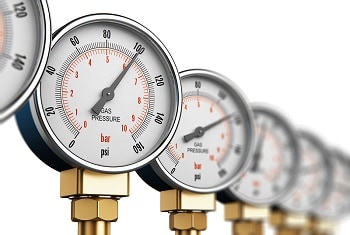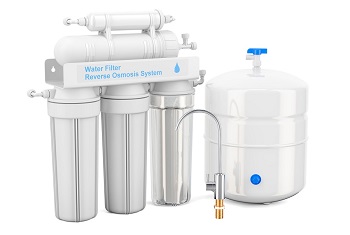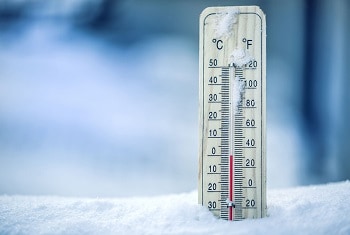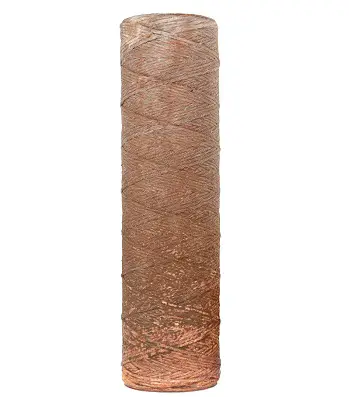UPDATED: March 29, 2022
I often get calls from customers that have just changed their reverse osmosis filters asking me why they aren’t getting much water from their RO. In most cases, the reason why is that they haven’t allowed enough time for the system’s storage tank to fill completely. So how long does it take to fill a reverse osmosis storage tank?
It takes 2 to 4 hours to fill a properly pressurized standard-sized reverse osmosis water storage tank under optimum conditions. Incoming water pressure, condition of filters and membrane, air pressure in the tank, and water temperature can affect how long it takes to fill an RO storage tank.
In order to understand how long it takes for a reverse osmosis storage tank to fill, you will need to know about a few factors that will affect how your reverse osmosis system works and how it creates reverse osmosis filtered water.
What Affects How Long It Takes To Fill An RO Storage Tank?
- Water pressure:
- Type of reverse osmosis system:
- Water temperature:
- Condition of the filters and membrane:
At the recommended water pressure of 60 psi and an optimum temperature of 77 degrees, A typical reverse osmosis will produce about 1.8 gallons of filtered water per hour. So an average 4-gallon storage tank will take between 2-4 hours for it to fill completely.
How fast a reverse osmosis storage tank will depend on four primary factors including the water pressure of the water supplying the reverse osmosis system, the type of reverse osmosis system that you have, the temperature of the water supplying the reverse osmosis system, and the condition of the reverse osmosis membrane and filters.
1: Water Pressure:
Ideally, the water pressure that feeds a reverse osmosis drinking water system should be about 60 PSI (Pounds Per Square Inch).
For optimal performance, the water pressure should be between 60 and 80 psi, although pressure as low as 40 psi is sufficient for most reverse osmosis systems to work correctly.
Excessive water pressure of above 80 PSI may cause some reverse osmosis systems to malfunction and not shut off correctly.
In cases where the water pressure going to a reverse osmosis system is exceeding 80 pounds per square inch, I highly recommend using a reverse osmosis pressure regulator to maintain an optimum water pressure feeding your reverse osmosis system.

If you find that the water pressure that is supplying your reverse osmosis drinking water system is insufficient, a reverse osmosis system with an assist pump may be helpful to speed up your reverse osmosis system.
In situations where other water treatment systems (like your water softener) may operate at the same time when your reverse osmosis system is used and may cause a drop in water pressure to the reverse osmosis system to below 40 psi, you should ideally set the other units to use water during times when the reverse osmosis system is not being used.
Setting a water softener or other water treatment system to operate during hours where little water is being used is highly recommended for better operation of the reverse osmosis system and for the water treatment systems.
2: Type of reverse osmosis system:
There are many different types of reverse osmosis systems available, and they can vary greatly, not only by price but also by options and output capabilities.

A $200 reverse osmosis system will produce similar (if not better) reverse osmosis water than a $2,200 unit. In fact, I have found little to no correlation between the price of a reverse osmosis system, and the purity of the reverse osmosis water that it produces.
There are 50, 75, and even 100 gallons per day reverse osmosis drinking water systems available, each producing quality filtered water, just at a different rate.
A 100 gallon per day reverse osmosis system will fill a reverse osmosis storage tank faster than a 50 gallon per day system simply because it is producing filtered water at a faster rate.
But having a higher output 100 gallon per day reverse osmosis system does not always mean that you will have substantially more available water from your reverse osmosis system.
A 100 gallon per day reverse osmosis system may produce more filtered water per day, but since a water storage tank will hold the same amount no matter how fast it fills, the amount of extra filtered water at your disposal per day will depend on how often water is drawn from the storage tank.
Not all reverse osmosis systems will fill their storage tanks at the same rate.
If the water pressure is affected to the point where it is not effectively being forced through the reverse osmosis membrane, The quantity and possibly the quality of the product water will not be what it should be.
3: Water temperature:
Although the performance of a reverse osmosis drinking water system is not affected by slight changes in water temperature, if the supply water is below 40 degrees Farienhight (4.44 Celsius), the temperature can greatly reduce the rate at which the reverse osmosis membrane can produce filtered water.

In some reverse osmosis systems, the filtered water production can reach a noticeable drop of up to 50% when the water being supplied to the system approaches the freezing temperature of 32 degrees Farienhight or 0 degrees Celsius.
Although it is rare for water to reach this low of a temperature, it can affect a reverse osmosis system’s output potential and therefore it can affect how long it takes to fill your reverse osmosis storage tank.
4: The condition of the filters and membrane:
Naturally, a brand new filter will allow for a greater flow of water than one that has been filtering water for six months. And of course, a filter that is a year old will not be as effective as a filter that is only six months old. This also applies to a reverse osmosis membrane.

If one or more of a reverse osmosis drinking water system’s filters is obstructed because of particles that it has removed from the water that it has processed, the rate of filtered water being produced will be less than optimum.
This simply means that the older or more clogged the reverse osmosis filters, the slower the rate at which the reverse osmosis storage tank will be filled. This does not necessarily mean that the quality of the water will be less, but the amount of processed water per hour will be diminished.
Will A Reverse Osmosis Tank Fill Slower If The System Has More Stages?
Reverse osmosis systems are often described by the number of stages that the water will go through to produce the final product water.
Manufacturers like to say that the more stages that the water will pass through, the better the water that is produced will be.
In some cases, this may be correct, but with each stage comes a potential drop in water pressure. The more filters that water has to pass through, the more pressure is lost as water passes through.
Simply put, the water pressure going into a reverse osmosis drinking water system is not the same pressure that is going out of the system.
Why Am I Still Not Getting Much Water From My RO After 2 to 4 Hours?
If you have let your reverse osmosis drinking water system fill for several hours and you notice that you are still not getting very much water from it, the pressure in the storage tank may be too low.
A reverse osmosis storage tank that has lost air pressure will allow water in but not have enough air pressure to force all the water back out.
Before you grab your air pump and pump your storage full of air, be sure to follow the correct procedure for re-pressurizing your reverse osmosis storage tank.
Check out my article on “How To Re-pressurize A Reverse Osmosis Storage Tank” and check out this detailed video to make sure your reverse osmosis storage tank is working correctly!
Too little pressure will not push the water out, but too much pressure will not allow enough water into the storage tank. Your reverse osmosis system may be working perfectly fine, but the pressure in your storage tank must be correct for you to get the full amount of water that the storage tank can provide.
How Fast Does A Reverse Osmosis System Make Filtered Water?
A reverse osmosis drinking water system makes the water much slower than it comes out of the faucet, so it can take a while before you will have your normal amount of available drinking water.
Keep in mind that reverse osmosis water is produced by forcing the untreated water through a semi-permeable membrane which allows filtered water to go through and out to the systems storage tank and the unwanted contaminants are passed over the filter and washed away.
By simply having the water going through this semi-permeable membrane, the flow of the water is greatly decreased and some of the water is wasted down the drain.
So How Long Does It Really Take To Fill An RO Storage Tank?
Every reverse osmosis system works differently so naturally, how fast a RO storage tank will vary from one system to the next.
But, by making sure that your reverse osmosis system is working correctly and your storage tank is properly pressurized, you can make sure that your RO storage tank will fill in about 2 to 4 hours.
If you are going to do any work on your reverse osmosis drinking water system, check out my article on What I Use When I Work On A Reverse Osmosis System!



Hi, I just replaced the filters and membrane, new tank and still empty tank any advice?
Hello Juan and thank you for the question.
My first guess would be that your auto shut-off valve has gone bad. This is a valve that tells the system to stop making water once the storage tank completely filled. It is a little valve that looks something like this one that you can get here.
If this valve sticks, it will tell the reverse osmosis system to stop water flow to the system and therefore there will be no water in the tank. First, check the pressure in your tank. See How to re-pressurize a reverse osmosis storage tank”. And then change the auto shut-off valve.
I Hope this helps!
Paul
Long story short: After disconnecting my RO tank to do a pressure check (as part of trying to figure out why I was only getting a trickle from my RO faucet), and then reconnecting it, it took a few hours to re-fill (good, that’s how it is supposed to happen!). However, after doing the process a second time (there was still just a trickle at the RO faucet), I noted the RO tank filled up FAST (2 minutes). My RO faucet trickle issue was solved; however, my RO tank should NOT have filled up fast like that. I get the impression the whole RO filtration process is being bypassed somehow. What could cause water to rush into the tank without being filtered? Ruptured RO membrane? Bad Auto-Shutoff Valve? Whatever it is, its condition seems to have changed between the first RO tank disconnect, and the second one.
Hello Scott and thank you for the question.
A torn, bypassed, or poorly sealed membrane could allow the water to fill the storage tank that fast but that is quite rare.
I believe that the tank bladder should be fine, even a ruptured bladder would not make the tank fill faster.
I would check that you did not mix up the lines of the system.
More than likely, there is only one 3/8 inch tube going to the tank, but on some ROs there can be more than one 3/8 inch line.
I don’t know what brand RO you have but check your owner manual to be sure that all of the lines are connected correctly.
The auto shut-off should have nothing to do with how fast the RO fills the storage tank.
Hope this is helpful.
Paul